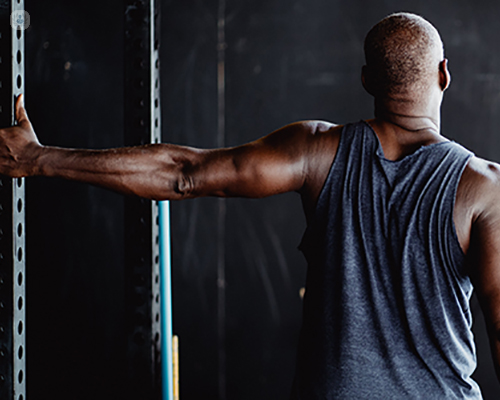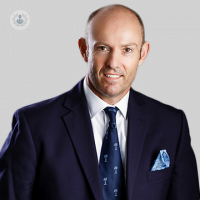Understanding shoulder instability: Insights and solutions
Autore:In his latest online article, Mr Graham Tytherleigh- Strong gives us his insights into shoulder instability. Shoulder instability is a comprehensive term that covers a spectrum of issues leading to the humeral head (Ball) losing its secure centering within the glenoid (Socket). This multifaceted condition manifests in various ways, including complete dislocation (where the head is entirely displaced), subluxation (an incomplete dislocation involving the head slipping to the edge of the glenoid socket), and micro-instability (where the humeral head lacks complete stability in specific movements).

Shoulder stabilisation mechanisms:
The shoulder, bestowed with the title of the body's most mobile joint, features a delicate balance between a small socket (glenoid) and a large head (humeral head). This inherent instability is counteracted by a practical set of mechanisms:
Static Stabilisers: These include the convex-shaped socket (glenoid), the glenoid labrum deepening the socket, and ligaments connecting the ball to the socket.
Dynamic Stabilisers: Multiple muscle groups surrounding the shoulder girdle engage in a complex rhythm, facilitating shoulder movement while steadfastly maintaining stability.
Types of dislocations:
Labral Tears/SLAP tears, causing a distinct type of instability, merit their own dedicated discussion. Shoulder dislocation or subluxation is a consequence of an injury or failure of either dynamic or static stabilisers, or a combination of both. Three primary causes underpin shoulder stability failure:
Traumatic injury: Typically resulting from significant incidents like falling forward with the arm elevated, traumatic dislocation involves the humeral head being forcefully propelled forward, tearing ligaments, and sometimes causing damage to bone structures.
Ligamentous laxity: Found more commonly in females and younger individuals, some people exhibit more lax or stretchy tissues. In extreme cases, overly lax ligaments fail to completely restrain the ball within the socket, leading to subluxation or dislocation.
Muscle patterning disorder: Disruption in the sequence of muscle groups working to stabilise the shoulder can result in the shoulder being pulled out of the socket due to imbalances.
Remarkably, static stabilisers of the shoulder often remain intact in these cases. In certain instances of shoulder instability, a combination of the previous problems may coexist simultaneously.
Treatment of shoulder dislocations:
Effectively addressing shoulder dislocation hinges on accurately identifying whether it stems from traumatic dislocation or ligamentous laxity/muscle patterning. Individuals experiencing symptomatic traumatic dislocation often require surgical repair. On the other hand, those dealing with ligamentous laxity or muscle patterning issues can typically find relief through a specialised rehabilitation program under the guidance of an experienced physiotherapist. This comprehensive approach ensures tailored interventions that align with the specific nature of the instability, fostering optimal recovery and long-term shoulder health.
Mr Graham Tytherleigh- Strong is an esteemed orthopaedic surgeon with over 30 years of experience. You can schedule an appointment with Mr Tytherleigh-Strong on his Top Doctors profile.


